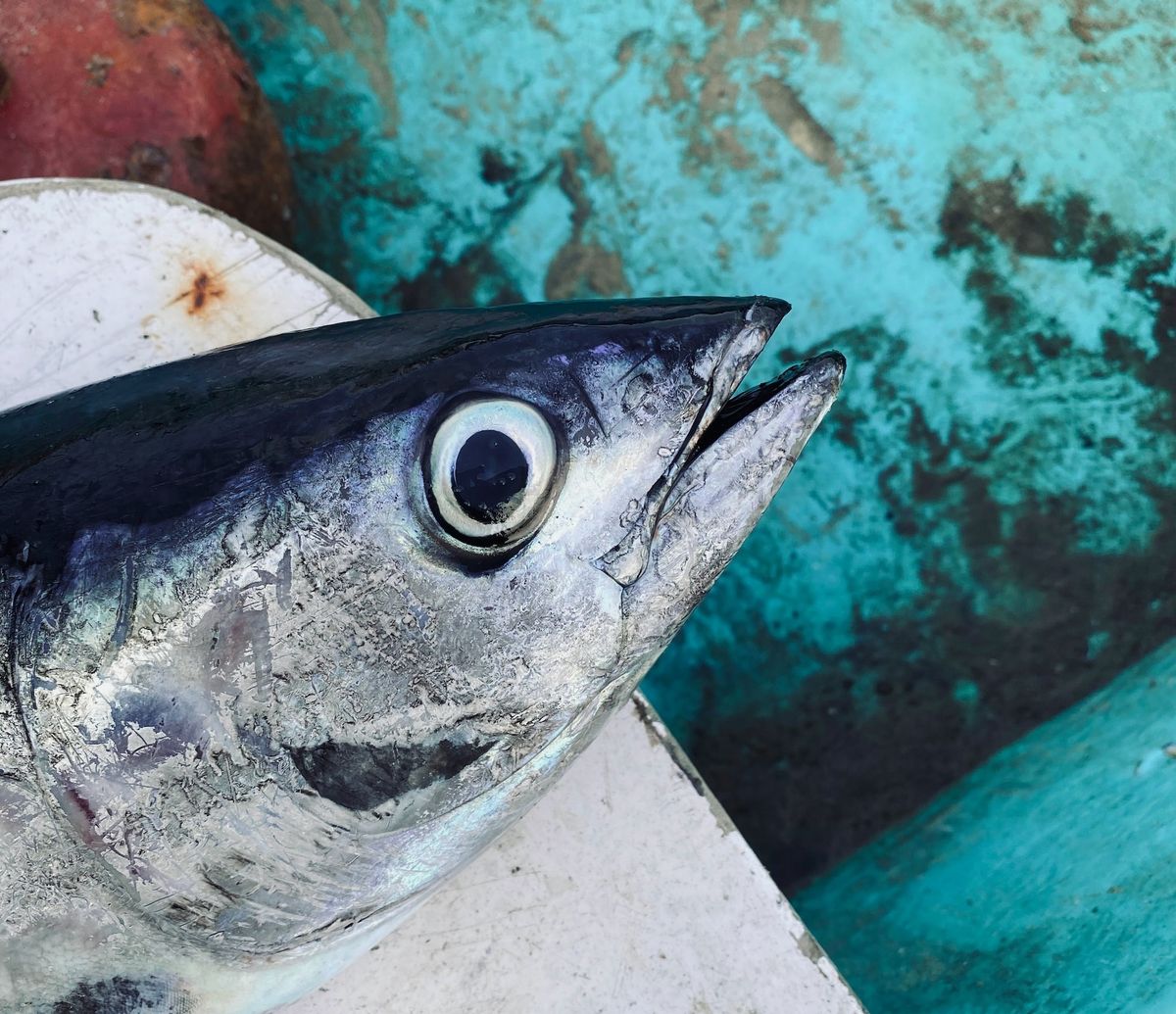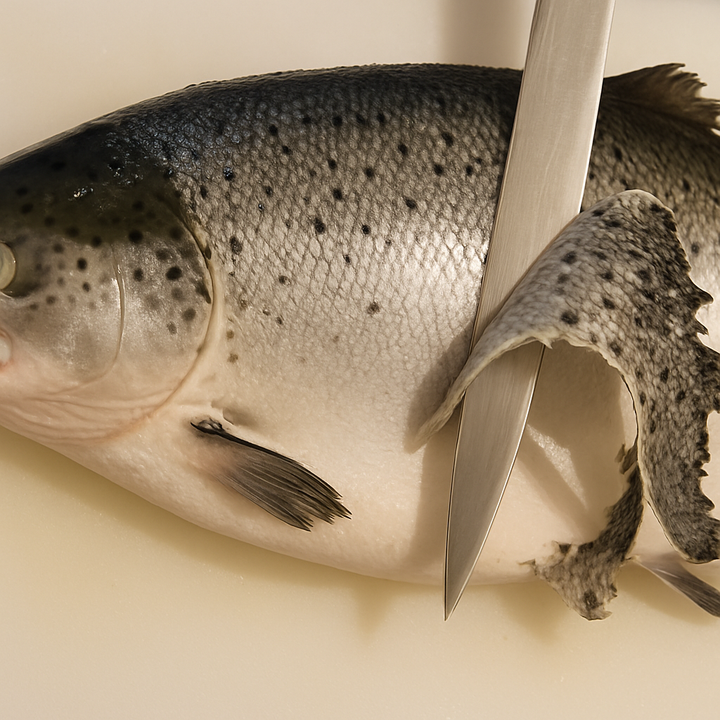Iki Jime: Japan's Tasteful Fish Slaughter Method
Amidst concerns over humane fish slaughter, Ike Jime emerges as a Japanese method that potentially offers a compassionate and flavor-retaining alternative.

Often, diners remain unaware of the journey their meal undertakes from life to plate, a reality that a quick online search about meat origins can starkly unveil.
Among vegetarians, a subset known as pescatarians, find a middle ground by including fish in their diet.
Science somewhat supports their stance, positing that fish, with their less developed neocortex, might not feel pain like mammals.
However, the opposing view emphasizes the lack of humane slaughter protocols for seafood, suggesting a potentially distressing demise for them.
Amidst this, Ike Jime, a Japanese fish slaughter method, emerges as a humane and tasteful alternative.
This technique not only leans towards a compassionate ending for the fish but may also elevate the culinary experience by preserving and enhancing the cuts or meat's flavor and texture, making it a sought-after technique for sashimi-grade fish in upscale dining.
What Is Iki Jime or Ikejime?
Iki Jime, alternatively spelled Ike Jime, embodies a time-honored Japanese technique for preparing fish, rendering them immobile and effectively draining their blood.
When executed proficiently, this method not only safeguards the inherent flavor and texture of the fish but also fosters the emergence of a rich umami essence as the flesh matures over time.
Origin and History of Ikijime
Iki-jime originated in Japan and is believed to have developed around 350 years ago.
This method has been employed by Japanese chefs since its inception, especially in preparation of high-quality sushi and sashimi where the aging of the fish is crucial for achieving a concentrated flavor.
The technique became prominent during the Edo period in Japan, following a lengthy ban on eating meat that was only lifted in 1872.
The inception of Iki-jime provided a humane and quality-preserving method for handling fish, making it a staple in Japanese culinary practices.
The Science Behind Iki-Jime
The underlying principle of Iki Jime is straightforward: minimizing the trauma experienced by the fish before, during, and post-slaughter ensures superior meat quality.
When a fish undergoes stress or struggles during the slaughtering process, it secretes lactic acid and cortisol, substances that are known to compromise meat quality.
The technique of Ike Jime targets a swift disruption of the brain and spinal cord functions, thereby curtailing the transmission of stress signals throughout the fish's body.
This prompt action not only alleviates the potential suffering of the fish but also aids in retaining the meat's texture and flavor, by preventing the biochemical reactions that are triggered by stress and struggle.
This methodical and swift intervention epitomizes a harmonization of ethical considerations with culinary excellence, ensuring the fish's humane end while preserving the integrity and enhancing the gustatory appeal of the meat.
Iki Jime Tools
The primary tools used in Iki-jime are a specialized spike for brain spiking, and a thin needle or wire for spinal cord destruction.
The traditional spike, known as "Tekagi" or an Iki Jime tool, is crafted for precise, quick insertion into the fish's brain, while a needle or wire threads along the spinal column to cease muscle movement, preserving the meat's quality.
Modern variants like the Ikipik or Ikigun, now available at reputable tackle shops, offer contemporary, specially designed options for practicing Iki Jime.
Modern adaptations may feature ergonomic designs for ease of use and effectiveness in executing this traditional Japanese method.
Methodology of Ike Jime
The Iki-jime technique is a meticulous process aimed at ensuring a humane end for the fish while preserving the integrity of its meat. Here’s a step-by-step breakdown of the method
Positioning the Fish
The process begins with securing the fish to ensure a steady position. This is crucial to perform the following steps accurately and swiftly.
Brain Spiking
A specialized spike or known as Tekagi is prepared for the crucial step of brain spiking. The spike is quickly and precisely inserted into the fish’s brain, typically located slightly behind and above the eye.
This action causes instant death, minimizing the fish’s suffering and preventing the release of stress hormones and other biochemical substances that could degrade the meat's texture and flavor.
Death Verification
Upon inserting the spike, it's vital to ascertain the fish's demise before proceeding. The flaring and subsequent relaxing of the fins are tell-tale signs of a successful spiking.
Gill and Tail Incisions
Transition to the gills and tail, areas housing major blood vessels and central nervous system respectively. A precise cut on the gills aids in subsequent blood drainage while an incision towards the tail preps for the next phase.
Spinal Cord Neutralization
With death confirmed, a slender needle or wire is meticulously threaded along the spinal column to neutralize the spinal cord. This pivotal step halts further muscle activity, averting the secretion of lactic acid and ammonia which could render the fish sour, soggy, and less palatable.
Bleeding
Now, it’s time for blood drainage, a decisive step as, “The essence of freshness is from bleeding a fish,” says a seasoned practitioner. Immerse the fish in icy water, ideally from its native habitat, head downward where feasible. Swift execution of the entire procedure, especially the bleeding, ensures the blood doesn't infiltrate the muscles, preserving the delicate, desired flavors of the fish.
Cooling
After humanely killing your fish using the Iki Jime method, enhance its taste by placing it on ice or better yet, in an ice slurry (at least two parts ice to one part water).
Putting a fish in an ice slurry is usually fine for many small, warm-water fish. However, it may not work well or be suitable for larger fish or those from cold waters like trout.
Aging (Optional)
Some practitioners of Iki-jime allow the fish to age, which can enhance the umami flavor of the meat. This step is optional and largely depends on personal or culinary preferences.
Preparation for Consumption
Finally, the fish is prepared for consumption. The meticulous nature of the Iki-jime process results in high-quality, flavorful meat, ready to be crafted into exquisite culinary creations.
Percussive Stunning vs Iki Jime
Percussive stunning and Iki Jime both target meat freshness and quality, though differently.
Percussive stunning, although simple, may not halt post-mortem muscle spasms, accelerating ATP depletion in muscle cells, triggering early rigor mortis, which could affect meat's texture and flavor.
Its effect on meat freshness is initial, and may not significantly enhance flavors through controlled aging.
Conversely, Iki Jime, with its precise technique, curtails stress and muscle spasms, preserving ATP levels and delaying rigor mortis.
This not only retains freshness but also improves the aging potential of the fish meat. Over time, controlled muscle protein breakdown during aging can enrich umami flavor, a hallmark of high-quality fish meat.
Iki Jime thus fosters a conducive environment for the meat to age gracefully, gradually developing flavors while maintaining freshness and texture, making it a more effective method for meat freshness, aging, and flavor enhancement compared to percussive stunning.
Popular Fish Utilized in Iki Jime
Trout and Tuna:
Trout and Tuna are among the types of fish that can be subjected to Iki Jime to maintain high-quality seafood for your dinner table.
- Tuna, Yellowtail, and Snapper:
These fish: Bluefin, and other tuna varieties are not only popular but also preferred by chefs to be processed using Iki Jime to ensure the meat meets the highest standards of quality and flavor. - Various Freshwater, Estuary, and Offshore Fish Species:
Iki Jime is applicable to over 150 popular freshwater, estuary, and offshore fish species across different regions including Australia, New Zealand, Southeast Asia, the Americas, Europe, and Asia. The method's effectiveness makes it a preferred choice for a wide variety of fish species.
Final Thoughts
This method embodies a blend of tradition, ethics, and culinary science, showcasing a respectful approach to handling seafood while also catering to the high-quality demands of gourmet cuisine.
Through the adoption of Iki-jime, chefs and fishermen can ensure that the fish's meat retains its premium quality, enhancing the gastronomic experience for discerning consumers.


